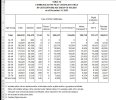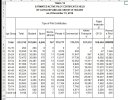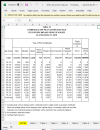FormerHangie
En-Route
The Feds have released the U.S. Civil Airmen Statistics are now available. I'm a numbers guy and find this stuff interesting, and if you do too, this should make for an interesting discussion.
First up, the total pilot count:
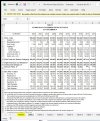
The pilot count is up, pretty much across the board, save for the mostly moribund Recreational Pilot rating. Having a hard time finding a plane to buy, and then having an equally hard time finding a place to put it? I can believe that. Few new airplanes are being made, and I don't think the number of public use airports is increasing much, if at all. One caveat: the count of student pilots is misleading, because student certs don't expire, and most of those in that count are inactive. A better idea of student activity can be gotten from the number of new student certificates issued:
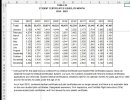
These are up solidly as well, which explains the market for Cessna 172s.
Number of ratings earned is up as well:
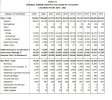
All this points to solid growth. One other thing I look at is avgas consumption, with is provided by the US Energy Information Administration. I'm using their product supplied statistics, which is what they use for consumption:
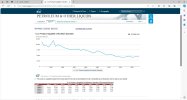
It's down. Something here doesn't add up. I was trying to reconcile these two sets of data, how is it that training activity is up but avgas consumption is down. One possibility is that the business and commercial part of GA switched from pistons to turbines. I do believe that has happened, but it mostly happened in the 2010s. If you go to FlightAware and look at the aircraft aloft by type, the count of piston aircraft that typically would be used for some sort of revenue service (Navajos, 400 series Cessna twins, Air Bemidji's fleet of Queen Airs, and Cape Air's fleet of TECNAM P-2012s, and the volume is very low, and has been for a while. What that led me to was to find out who was flying what, which is continued in the next post.
First up, the total pilot count:

The pilot count is up, pretty much across the board, save for the mostly moribund Recreational Pilot rating. Having a hard time finding a plane to buy, and then having an equally hard time finding a place to put it? I can believe that. Few new airplanes are being made, and I don't think the number of public use airports is increasing much, if at all. One caveat: the count of student pilots is misleading, because student certs don't expire, and most of those in that count are inactive. A better idea of student activity can be gotten from the number of new student certificates issued:

These are up solidly as well, which explains the market for Cessna 172s.
Number of ratings earned is up as well:

All this points to solid growth. One other thing I look at is avgas consumption, with is provided by the US Energy Information Administration. I'm using their product supplied statistics, which is what they use for consumption:

It's down. Something here doesn't add up. I was trying to reconcile these two sets of data, how is it that training activity is up but avgas consumption is down. One possibility is that the business and commercial part of GA switched from pistons to turbines. I do believe that has happened, but it mostly happened in the 2010s. If you go to FlightAware and look at the aircraft aloft by type, the count of piston aircraft that typically would be used for some sort of revenue service (Navajos, 400 series Cessna twins, Air Bemidji's fleet of Queen Airs, and Cape Air's fleet of TECNAM P-2012s, and the volume is very low, and has been for a while. What that led me to was to find out who was flying what, which is continued in the next post.


